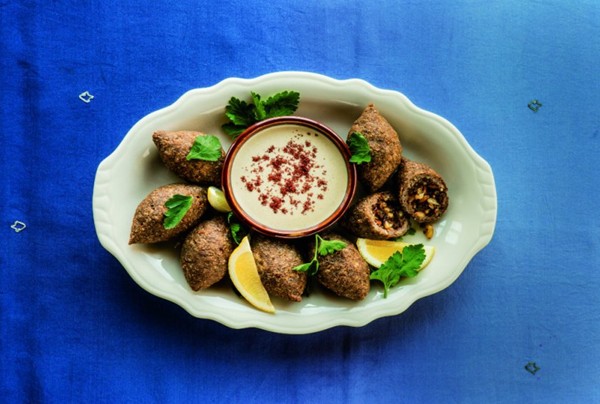The rise of Israeli cuisine
October 15, 2016 by Darcie 
Over the last several years, Israeli cuisine has made a huge splash all over the world. In the UK, Yotam Ottolenghi has reached icon status and currently his cookbook Plenty is on more EYB Bookshelves than any other book in the Library. In the US, Michael Solomonov’s restaurant Zahav is making waves and his cookbook of the same name is also highly regarded. FSR Magazine explores the many reasons why the time was right for Israeli foods to reach a larger audience.
Explaining the cuisine can be difficult says Chef Solomonov. “Israeli cuisine is almost what it’s not; it’s not only Middle Eastern or Mediterranean or Jewish, it’s all of those and more,” he notes, adding “There are also influences from Bulgaria, Hungary, Turkey, Greece, Russia, Yemen, and now Ethiopia and Georgia because of all the people coming to the country and the blend of cultures.” It’s this blending of cultures, each bringing their own flavors and techniques, that makes Israeli cuisine exciting.
The spice most associated with Israeli food is za’atar, a blend of herbs like cumin and oregano, salt or sumac, and sesame. Other major flavors include the familiar olive oil and lemon, plus many unique seasonings like urfa biber, a smoked, mild pepper from Turkey and hawayej, a Yemenite spice blend with turmeric, cumin, black pepper, coriander, and fenugreek used to season chicken, fish, rice couscous, and salads.
Photo of Fried kibbe from Zahav: A World of Israeli Cooking by Michael Solomonov and Steven Cook
Categories
- All Posts (6940)
- Antipasto (2135)
- Author Articles (247)
- Book News (935)
- Cookbook Giveaways (983)
- Cookbook Lovers (257)
- Cooking Tips (109)
- Culinary News (299)
- Food Biz People (552)
- Food Online (791)
- Holidays & Celebrations (272)
- New Cookbooks (149)
- Recipes (1500)
- Shelf Life With Susie (231)
- What's New on EYB (133)
Archives
Latest Comments
- eliza on What foods do you look forward to the most for each season?
- kmwyman on Rooza by Nadiya Hussain – Cookbook Review and Giveaway
- Maryd8822 on The Golden Wok – Cookbook Giveaway
- Dendav on Danube Cookbook Review and Giveaway
- sanfrannative on Rooza by Nadiya Hussain – Cookbook Review and Giveaway
- darty on Danube Cookbook Review and Giveaway
- Atroyer7 on Danube Cookbook Review and Giveaway
- demomcook on What foods do you look forward to the most for each season?
- demomcook on Danube Cookbook Review and Giveaway
- Darcie on How cookbooks can help build resilience